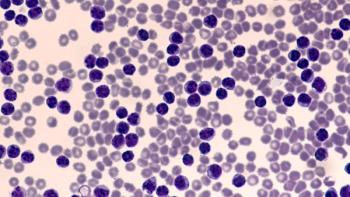
Diagnosis and Assessment of Melanoma
In this Pharmacy Times program for Health Systems Pharmacists, Nanaz Amini, PharmD, RPh, MS, of the Angles Clinic, provides a pharmacist’s perspective on the management of melanoma.
Transcript
For the assessing that’s usually done nowadays, a lot of patients go to dermatologists and they have just an annual checkup to see if they have moles, if they need to be removed, and they’re biopsied. However, sometimes assessment is just you feel a lump, you feel something that you think is a problem, and then you go to the doctor. So, it’s self-assessment. The people who are little more vigilant, they would go to a dermatologist and it’s assessed there.
And staging is basically done based on the thickness, the size of the tumor, if the tumor is ulcerated or not ulcerated, and if there’s nodal involvement and it’s metastasized, and usually that staging is done by the medical oncologist. But, usually, if there is a mole that’s removed now surgically or just by a biopsy in the dermatologist’s office and sent for pathology, that is the other component that’s used. So, there’s staging that’s done based on size, if there’s things that they can visibly see, but then the pathology of it is used in combination. And also, diagnostically, their CT scans are done to see if there’s measurable disease. Obviously, if they think that it’s metastasized, you’re going to do PET scans as well. Those are the different diagnostic tools that are used to determine the stage of melanoma. But really, it’s nodal involvement, ulcerations, the size, the thickness of the tumor, and if it has metastasized throughout the body.
It just depends what the first point is. If you’re someone who regularly goes to the dermatologist, it’s usually the dermatologist who is your first point of contact. And then, if the pathology comes back and says that it is melanoma, then you’re usually referred to a medical oncologist. However, if you go through primary care and your primary care doctor determines, again, if there’s a biopsy that’s needed, then you will end up with a medical oncologist at the end. You’ll basically be referred. It’s part of like an HMO (health maintenance organization). Obviously, you’re not going to go straight to the dermatologist.
So, I think that’s really our healthcare. You have to go to your primary care physician to determine if this is something, it’s biopsied, and then you’re referred to a specialist, which would be the medical oncologist, as opposed to somebody who has like a PPO (preferred provider organization) where you may take yourself to the dermatologist. Or if you have a lump in a particular body part and you just go straight to specialists, you’d go to that specialist. And unfortunately, people don’t realize melanoma sometimes is not something that you visually can see. Even though it is a skin cancer, a lot of our body is skin so it’s an internal visceral disease. Therefore, there are things that you’re not going to necessarily see. You’ll feel a lump, so it’s very different. And you may see somebody who has melanoma, but it is in their abdominal cavity—they look pregnant. That’s another thing that I think the general population should understand, that melanoma is a skin cancer, but not necessarily is it something that’s visible. So, it really depends on point of contact and depends on where you’re seeing something, who you would go to, and who your healthcare is.
For melanoma, as a pharmacist, there are levels that you would be interacting with and helping in a therapeutic team. First and foremost, you want to guide physicians, medical oncologists, even your billing department, of what the indication of the medication is. And just staging and knowing which ways patients can be treated. So, you need to know the indication. And a lot of the doctors just want to treat their patients, and sometimes the indication and getting approval through insurance, that is something the pharmacist would definitely be able to steer to the proper channel.
Above that, most of these immunotherapies are weight-based therapies. Therefore, all calculations that are done are done by the pharmacist. So, that’s from the starting gate. As far as what happens afterwards, it would be side effect management. But if I took something like Yervoy (ipilimumab), which is the standard that’s used now, a lot of patients end up with colitis. And if you already have problems, ulcerative colitis in your history, Yervoy would not be the thing for you to use. That would be something that, looking in the patient’s history, I could help the teams determine. Maybe this is not the best thing for the patient to try, they need to have something else because the risk outweighs the benefit for the patient.
But there are other medications that you would use like targeted therapies. Tafinlar (dabrafenib) can cause cardiomyopathy. So, if you already have that, that’s really not an option for you. Some of it is side effect profile management. If patients need to put on prednisone, if they have diarrhea—which is very common with Yervoy per se—or if anything of that nature, you would help in that instance. But in addition to that, in our practice, besides clinical trials, besides the actual treatment, we also have an oral oncolytic service.
So, all of the targeted therapies that exist right now would go under like a specialty pharmacy for oncolytics. And it requires that you go through the past reports, that you go through the genetic profiling to get prior authorizations for patients to get the medications. In addition to that, you have to counsel these patients on what to look out for on their own, what not to look out; how to take the medication. Some have fasting periods, some don’t. Those are things that you can help on the front end to help the physicians decide what the treatment should be based on that particular patient’s staging, where they’re at, what treatments they’ve already gone through, and also, more specifically, what side effects or what past medical history they have that would basically steer you not to give the medication.
As far as diagnostic tools that are used, as a whole, the first thing you’re going to do is assess a patient’s medical history to determine what drugs can be used. Also, you’ll see there are a lot of patients who come in and, long-term, there’s a lot of family cancer in them. It might be melanoma, but there’s also patients where there’s some genetics that are involved in melanoma. And you will see they have a sister, a brother, a mother, someone who has had a cancer or melanoma itself. So, that also helps. Basically, doctors realize how it runs in the family tree.
And then, in addition to that now—pretty much standard for not just for clinical trials, but just standard, especially in the field of melanoma—there’s genetic testing that’s done straight out the gate. So, to know if the patient is BRAF-positive or BRAF-negative. The original targeted therapy that was first approved, which was Zelboraf (vemurafenib), was actually approved with this FDA-approved lab test. And that’s what has been the trend.
Those are things you would want to have in order to start treatment—know what past treatments they’ve had, if they’ve had surgery, if they’ve had chemotherapy. Whatever it may be that you’d want to assess the patient. Another thing you’re going to check is LDH, lactate dehydrogenase. That is a key marker that we test. Every time a patient who is on treatment comes in, it’s a lab value, and basically, that is used just like how many other markers are used in other cancers to determine if the therapy is working. So, you would see patients who have LDH values when they first come to us prior to treatment that could be in the thousands. And the normal range, just so to put it in perspective, is below 200. When you have somebody in the thousands, it’s very different. They’re progressing rapidly.
Newsletter
Stay informed on drug updates, treatment guidelines, and pharmacy practice trends—subscribe to Pharmacy Times for weekly clinical insights.




















































































































































































































